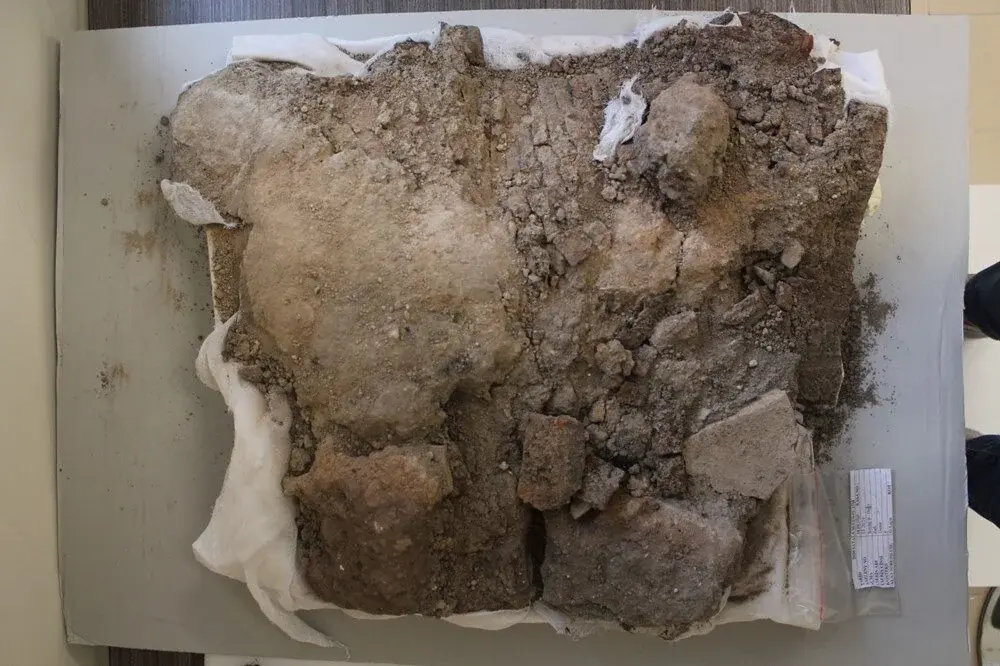One of its kind, 1,500-year-old Roman ‘Lorica Squamata’ legion armor restored
A unique 1,500-year-old Roman ‘Lorica Squamata’ legion armor, the only known example in the world and recovered in Türkiye’s ancient site of Satala, has been restored

In a remarkable feat of preservation, the only known example of a “Lorica Squamata” model Roman legionary armor, dating back 1,500 years, has been successfully restored in Türkiye.
This unique artifact was unearthed at the ancient site of Satala in Gümüşhane during the 2020 excavation season.
The restoration project was spearheaded by Türkiye’s Ministry of Culture and Tourism. Initially discovered and removed from the site with the support of the Ankara Regional Laboratory, the armor was later transported to the Erzurum Restoration and Conservation Regional Laboratory in 2021.
Detailed analysis, including X-ray and tomography, was conducted at Erzurum Atatürk University to document the armor in its soil-encrusted state.
According to the ministry’s statement, the armor dates back to the Late Roman Period. It is a significant example of the Lorica Squamata type, noted for being the first known to the world. X-ray examinations revealed that the armor was nearly intact.
The meticulous restoration involved micro-CT imaging of three edge plates to determine their precise measurements and metallurgical properties.
“Such armor rarely survives to the present day,” the statement highlighted. “The detailed X-ray results indicated that the armor was almost entirely intact. Through rigorous efforts over three years at the Erzurum Restoration and Conservation Laboratory, each plate of the armor was carefully cataloged, conserved and restored to its original form. The armor was reassembled on a mannequin to reflect its original appearance, standing once more in its full glory.”
In Roman times, legionary armors were not custom-made for individuals but were instead repaired and reused as needed. When beyond repair, they were melted down and repurposed, which is why surviving examples are so rare today.

Lorica Squamata
Lorica Squamata, or “scale armor,” used extensively by Roman soldiers and predominantly worn by higher-ranking soldiers, including officers, standard bearers (signifiers), musicians and some cavalry units.
Unlike the more commonly known Lorica Segmentata, which was made of large, rigid plates, Lorica Squamata was composed of numerous small, overlapping metal scales sewn onto fabric or leather backing.
Each scale, typically crafted from bronze or iron, had small holes punched into it, allowing it to be wired or stitched in overlapping rows.
This construction method provided a unique balance of flexibility and protection, enabling greater freedom of movement for the wearer while still offering significant defensive capabilities.
The armor’s design made it highly adaptable for various roles within the Roman military. Its flexibility allowed soldiers to move more freely compared to those encased in rigid plate armor, which was a crucial advantage in dynamic combat situations.
However, this flexibility came at a cost: Lorica Squamata required careful maintenance to prevent rust and damage, and the numerous scales made it relatively heavy.
Despite these drawbacks, the ability to individually replace damaged scales without discarding the entire armor added to its practicality and longevity.
🛡️ Satala Antik Kenti'nde Büyüleyici Bir Keşif! 🛡️
— Mehmet Nuri Ersoy (@MehmetNuriErsoy) June 19, 2024
Gümüşhane'nin tarihî hazinesi Satala Antik Kenti'nde 2020 yılında bulunan Roma lejyoner zırhı, tam 3 yıl süren özenli çalışmalarla restore edildi.
Erzurum Restorasyon ve Konservasyon Bölge Laboratuvarı'nda uzman ellerde yeniden… pic.twitter.com/s9gjwv2Mbm




